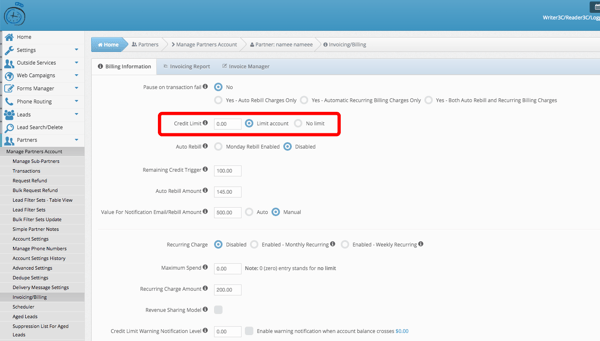Managing Insertion Order In boberdoo
We all tend to use blanket terms, like calling tissues Kleenex or medical bandages Band-Aids. But did you know these and even the words dumpster, bubble wrap, and popsicle are actually brand names? Well, with Invoicing something similar has happened. Things that are not Invoicing have been tagged as such. For instance, Insertion Order is not Invoicing whereas Credit Limit is. In fact, the two are opposites. To use them interchangeably would be similar to calling cats dogs because both are household pets.
Invoicing
When it comes to invoicing, imagine a credit card spending limit. A bank may be less likely to extend the credit limit for a new customer versus a long-standing customer who asks for the same thing. In the boberdoo system, you are selling the lead to your partner on credit and then billing at the end of the period for the leads you sold them. You can set up the credit limit for a partner under the Invoice/Billing tab shown below, or select the dollar icon for a specific partner. Once you set the limit, the partner can let you balance go into the negative for that amount. No limit is exactly what it says; the partner can spend as much as they want and be charged for it.

Insertion Order
Insertion Order is the exact opposite of credit limit. The buyer gives the seller x amount and will give them that many leads worth. So it would be as if someone gave you $500 and you gave them $500 worth of leads over time. It's more like a prepaid transaction than credit.
Payment Details
I will gladly pay you Tuesday for a hamburger today. Now that we understand how Invoicing and Insertion Order work, how do we actually get the money into the system? Under the Billings and Payments tab, you can find Payment Details. From here you can add a credit card , an ACH account, a PayPal account and/or a wire for transferring funds. There can be a primary and secondary payment methods or paying your bill, and other transactions through the system.
